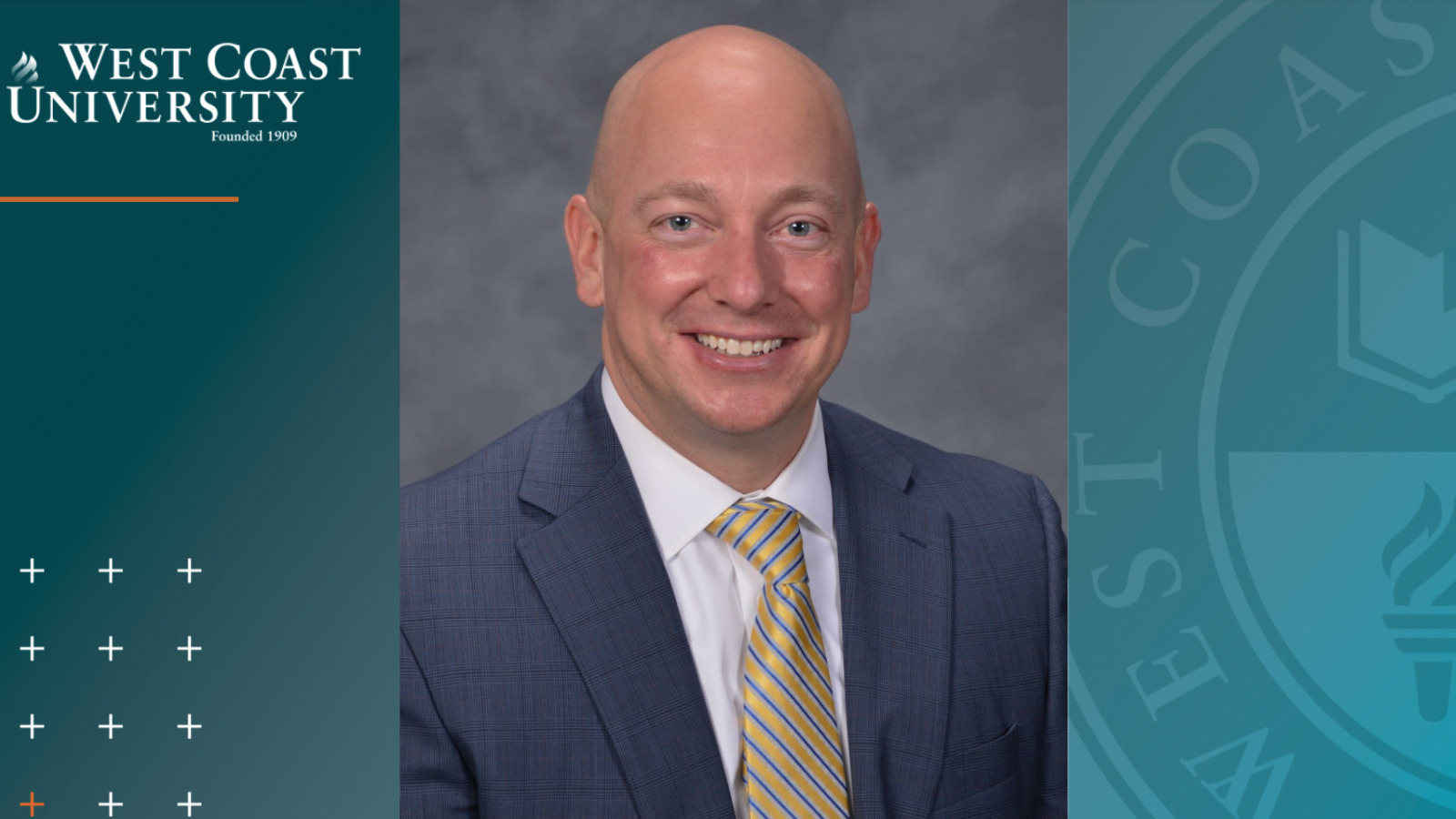The COVID-19 pandemic revolutionized the way many of us work along with how businesses across industries operate. This is especially true for healthcare workers and hospital administrators, many of whom were working on the front lines.
We sat down with West Coast University MHA Professor and former hospital CEO Jake Redden for his insights on these post-pandemic shifts for healthcare administrators.
WCU: We all know COVID-19 was a huge game changer, especially in healthcare where workers were on the front lines. Can you just talk about what some of the biggest challenges were for hospitals and health administrators during this time?
JR: It was definitely the flexibility with staffing because we in healthcare are humans, too. We are vulnerable to catching the same diseases we’re running into, especially with things that are contagious, as we saw with COVID. And in addition to just keeping our staff healthy so they can care for the patients coming through the door, we were also dealing with the issue of staff’s children, the school closures, and the spouse issues. Patients are showing up at the door and they’re expecting a fully staffed unit, you’ve got 30% of your staff that are out sometimes. In that standpoint, it’s always tough figuring out who can deliver this care, who’s going to be there for the next shift.
At the same time, it magnified the burnout that we’ve already been starting to uncover in healthcare, because this has made it more front and center, especially when we’re trying to find that right work-life balance.
WCU: So, we’ve talked about the problems caused by COVID-19. What were some of the solutions? How did hospitals and health administrators respond to these problems?
JR: One thing that was well-recognized, especially in larger organizations, was the bureaucracy of operations. We write policies, and those policies can take three to six months to make their way through the approval funnel, and then we have to disseminate them. But during the pandemic, change was able to happen a lot more quickly. More staff stepped up, more staff gave solutions and input, and so we became very agile.
Now the question is, “How do we keep this agility now that COVID is starting to wind down?” And that’s actually become the bigger issue.
How do we keep from regressing back to that real lethargic, bureaucratic type environment? Instead, let’s keep being agile and quick to pivot on policies and procedures and other ways that we run our hospital organizations.
WCU: Agility is definitely a major benefit that many industries have experienced as a result of the pandemic. Are there any other positive outcomes that have become a mainstay as a result of COVID, such as a new policy or a strategy?
JR: What was interesting was the pandemic buildup from a supply standpoint. We have regulatory requirements that dictate how many supplies we’re supposed to keep on hand in case of an unlikely event, including a pandemic of this stature. But what a lot of hospitals found was when they went to pull those supplies was they were expired by beyond 10 years. Supply chain limitations and other issues became a big detractor. So now we’re in the stage where we’re rebuilding those supplies and improving how we work with our regional partners to make sure our shared supplies are managed more effectively.
I think emergency management sometimes isn’t always top-of-mind with leaders and we do the bare minimum or forget those checkboxes. We don’t do the drills, we don’t do the walkthroughs, we don’t do the tabletop due diligence as we probably should. And I think this has given us all a wake-up call for not only how we manage our communication systems with our partners, but also with regional, state, and federal regulations… so when we do have to respond to the next event, we’re that much more effective.
WCU: It sounds like we’re still dealing with a lot of these issues that became magnified during the pandemic, but now we’re getting more of a handle on it. Where are we now compared to right when it happened? Are we still dealing with a lot of burnout and staffing shortages? Or are things improving?
JR: Unfortunately, we notice that there’s a severe lack of interest from youth going into health industries and jobs today. This has raised huge red flags for where our nursing force and our physician force is for 2026, because they’re not showing up. So we’ve actually seen quite a bit of shrinkage. That of course drives up stress and lowers morale.
And it’s driving salaries up. We saw a 10% increase in both supply and salary inflation, and we don’t expect that to go anywhere else. And that becomes an issue because healthcare has one of the most complicated reimbursement systems of any industry out there.
It would be nice to have this wind-down, this kind of honeymoon phase post-pandemic, but I think we went from the COVID pandemic situation to more of a workforce budgeting situation for hospitals across the nation. If you’ve been watching the headlines, about 75% of all hospitals this year are operating in the red because of this unexpected inflation jump and the delay in appropriate reimbursement from both our government payers as well as our professional payers.
WCU: What are hospitals doing right now to help with attracting more nurses and healthcare staff and retaining them while also avoiding burnout?
JR: It all boils down to just regular employee engagement. If you can crush employee engagement, you’ll absolutely crush your patient experience. That thought process has been around in healthcare for many years. The problem is that not a lot of leaders are walking in the walk that is required to drive employee engagement.
Staff want to be part of something important, something bigger than themselves, and you can’t get much bigger than everyday miracles. But sometimes even when you’re on that floor and you’re caring for those folks, you’ve got to be reminded to step back and take a look at that big picture. And that’s where those middle managers really have to take the ownership of driving employee engagement, making their staff feel appreciated, and recognizing when their staff wants to learn something new or try a different occupation or develop a better skill set.
So if you can crush engagement, retention won’t be an issue, and your outcomes and everything else will follow. If you’re working toward being that best healthcare employer, that reputation gets out there and when you do have openings, it’s easy to recruit, easy to get referrals.
WCU: Looking ahead at the next few years, what are you expecting as we are going to recovery mode? How do you see this all playing out across hospitals?
JR: Economic forces are definitely top of mind. It’s interesting because at the last hospital association meeting I went to, there was very little chatter about strategic plans, patient safety, and different initiatives that are going on. It’s all reverted back to how are we going make these payroll expectations when we have such inflation that’s occurring across the economy. There’s a lot of that. And then where’s our workforce at? So, I think stronger partnerships need to occur between the schools and the healthcare organizations. We’ve got to do a better job with internships. We’ve got to do a better job with on-the-job training and a more journeyman/apprentice-type way to get these folks the advanced training they’re looking for. Otherwise you’re not going to have the staff that you’re looking for.
I see more investments at the high school level, and the hospitals have to be part of that. They have to send their role-model staff out there and get the enthusiasm of being a nurse leader and being a physician going again in this industry. And then for the federal government and our state agencies and commercials, we have to figure out how to fix this health insurance situation.
WCU: What additional advice do you have for health administrators to be successful going forward?
JR: Do legislative outreach, both at the state level and the federal level. You’ve got to be a partner with your representatives. We elect great people, but not everyone’s an expert in health systems. Not everyone’s an expert in healthcare reimbursement and staffing and the pipelines to find these workforces. So, they need local folks who can
meet with them and help them understand these problems so they can be better informed and make the right solutions for us in a more timely manner. We’ve got to really drive the sense of urgency amongst our elected legislative folks.
WCU: That’s great advice. Any other things that are on the job and within the hospital floor?
JR: I have to reiterate, within the hospital, it boils down to being really good at taking care of your people. We are the leaders who take care of the people who take care of the people, as they say. So it’s important to be a servant leader—get out there, understand, be a face that they recognize, get to know your staff, thank them every single day for coming in and doing these everyday miracles that you need to take care of the patients. Take care of your people and they’ll take care of you.
WCU: Now let’s focus on students. What advice would you give to current health administration students for the future?
JR: One is you have to network. They always say that 70% of the jobs out there aren’t posted on any job boards so you have to use your professional networks. There’s the American College healthcare executives, there’s a lot of different resources. As a leader, I know that I have all these problems that I need to solve. I need someone who I can bring on my team that will be the right person—that will figure out this issue and put the right solutions in place. So when I see a new student or a future graduate at these events, I talk to them and I start to imagine: Where would this person fit on my team?
There have been many times where I’ve created positions based on the talents that someone brings to me. So, if you’re not out there networking yourself and building your LinkedIn connections as well as your in-person connections, you’ve got to come in and make those moves. Or instead, you’ll have to chug through job postings and try to do it a longer way versus someone seeing the spark that you bring to the table—[the spark] that’s made you successful through your MHA program and now you’re ready to hit that workforce running.
WCU provides career guidance and assistance but cannot guarantee employment. The views and opinions expressed are those of the individuals and do not necessarily reflect the beliefs or position of the school or of any instructor or student.



